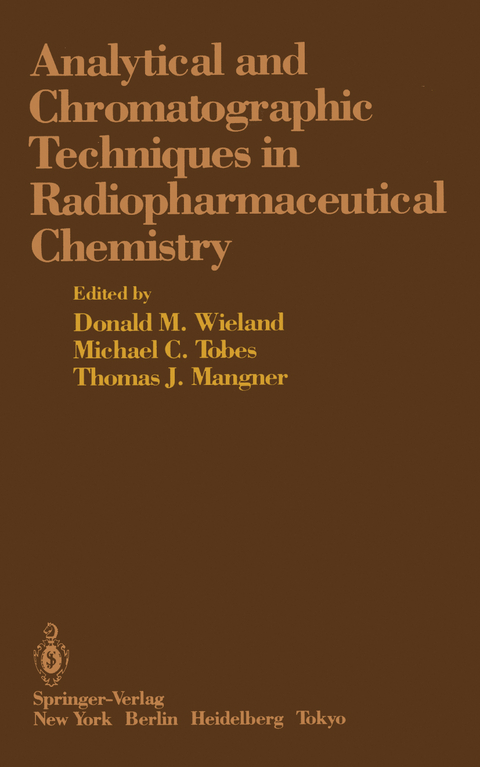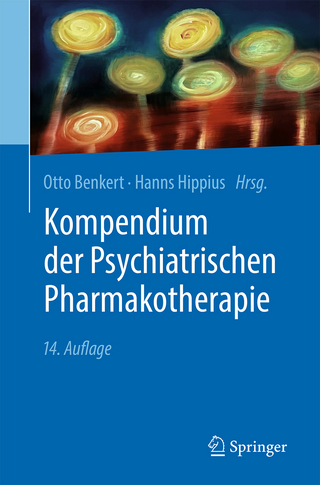
Analytical and Chromatographic Techniques in Radiopharmaceutical Chemistry
Springer-Verlag New York Inc.
978-0-387-96185-9 (ISBN)
- Titel z.Zt. nicht lieferbar
- Versandkostenfrei innerhalb Deutschlands
- Auch auf Rechnung
- Verfügbarkeit in der Filiale vor Ort prüfen
- Artikel merken
In 1906, Michael T. Sweet first developed the chromatographic method by using an adsorbant to separate pigments. Since that time, the technological advances in TLC and HPLC have brought about new definitions of purity in parallel with the advances. Radiopharmaceutical chemistry is especially dependent on the chromat ographic technique because of the relatively small amount of material in most radiopharmaceuticals-often so small that the usual physical methods of analytical chemistry cannot be used. As a result, this collection of papers represents the key to successful radiopharmaceutical development by setting the standard for the pres of radiochemical purity. ent-day definition William C. Eckelman, Ph.D. Diagnostics Associate Director The Squibb Institute for Medical Research New Brunswick, New Jersey Preface The chapters herein are updated and expanded versions of presentations that the authors made at a symposium held on June 4, 1984 in Los Angeles, California under the sponsorship of the Radiopharmaceutical Science Council of the Society of Nuclear Medicine. All manuscripts were refereed. The intent of the symposium organizers was to enlist participants who work on a day-to-day basis with the analytical and chromatographic techniques to be discussed at the symposium. We feel confident that this distillation of hands-on experience will be of value to graduate students as well as experienced researchers in radio pharmaceutical chemistry and related fields which use radiotracer methodology.
Thin-Layer Chromatography.- 1 Instrumental Evaluation of Thin-Layer Chromatograms.- 2 Radioanalytical Techniques: ITLC, TLC, Mini-Columns, and Electrophoresis.- 3 Radio-Thin-Layer Chromatogram Imaging Systems—Performance and Design.- 4 Detection of Radiochromatograms and Electropherograms with Position- Sensitive Wire Chambers.- High Pressure Liquid Chromatography.- 5 Components for the Design of a Radio-HPLC System.- 6 Overall Radio-HPLC Design.- 7 Quantitation of Radiolabeled Molecules Separated by High Pressure Liquid Chromatography.- 8 Flow Detector Designs: Build Your Own or Buy?.- Applications.- 9 Radio-HPLC: Application to Organics and Metal Chelate Chemistry.- 10 Concepts and Techniques Used in Metabolic Tracer Studies.- 11. Development of No-Carrier-Added Radiopharmaceuticals with the Aid of Radio-HPLC.- 12 From Cyclotron to Patient via HPLC.- 13 Potential Artifacts in the Chromatography of Radiopharmaceuticals.- 14 HPLC of Radiolabeled Antibodies.
| Zusatzinfo | 300 p. |
|---|---|
| Verlagsort | New York, NY |
| Sprache | englisch |
| Themenwelt | Medizin / Pharmazie ► Medizinische Fachgebiete ► Pharmakologie / Pharmakotherapie |
| Medizin / Pharmazie ► Medizinische Fachgebiete ► Radiologie / Bildgebende Verfahren | |
| Medizin / Pharmazie ► Pflege | |
| Medizin / Pharmazie ► Pharmazie ► PTA / PKA | |
| Naturwissenschaften ► Chemie | |
| ISBN-10 | 0-387-96185-2 / 0387961852 |
| ISBN-13 | 978-0-387-96185-9 / 9780387961859 |
| Zustand | Neuware |
| Informationen gemäß Produktsicherheitsverordnung (GPSR) | |
| Haben Sie eine Frage zum Produkt? |
aus dem Bereich


